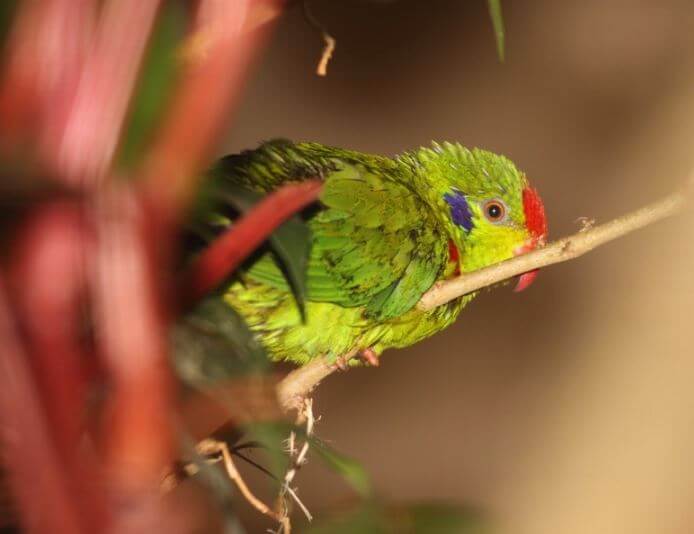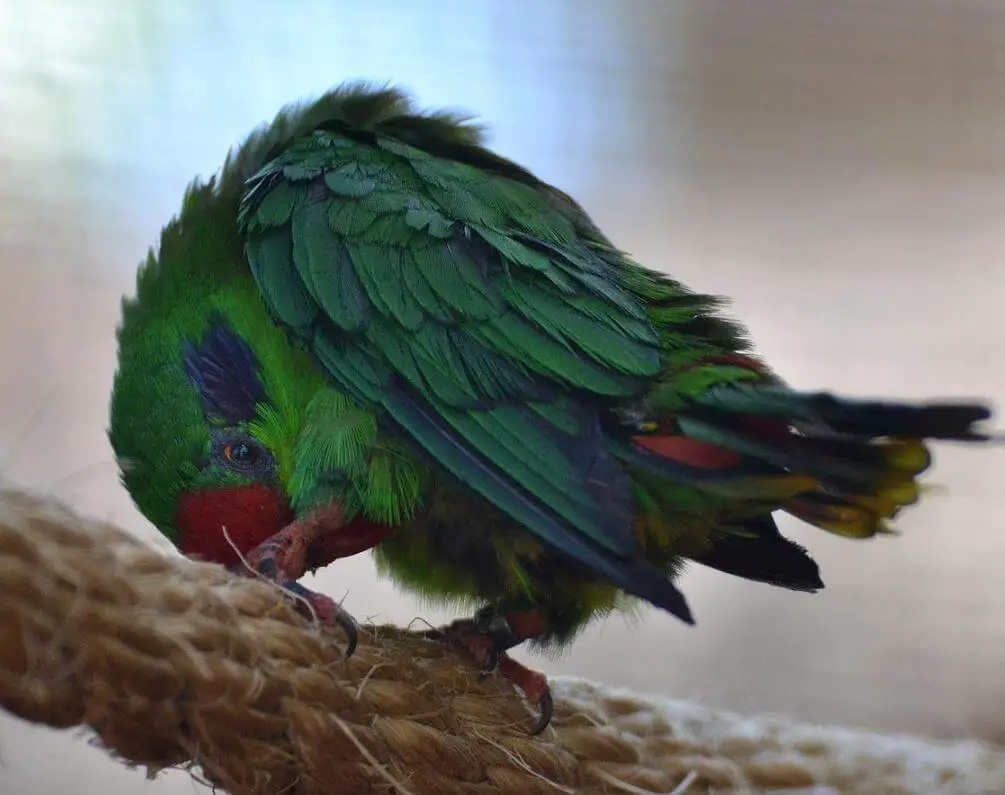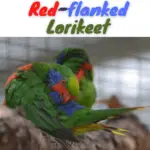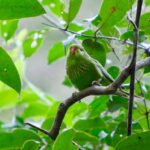
Red-fronted Lorikeet 17 cm; 30–35 g. Green above, yellowish-green below; forehead and sides of breast red, as are underwing-coverts, upper tail-coverts, and base of the underside of tail;
ear-coverts violet streaked blue; flanks and variable band across the underside of secondaries yellow; underside of tail dusky yellowish; bill and legs reddish.
Red-fronted Lorikeet Female lacks red on forehead, breast, and underwing coverts; ear-coverts green streaked yellow. Immature undescribed. Race kordoana has more, paler red on the crown, and bluer ear-coverts.
Systematics History
Editor’s Note: This article requires further editing work to merge existing content into the appropriate Subspecies sections. Please bear with us while this update takes place.

Red-fronted Lorikeet
Two subspecies were recognized.
Subspecies
Hypocharmosyna rubronotata rubronotata Scientific name definitions
Distribution
Hypocharmosyna rubronotata kordoana Scientific name definitions
Distribution
Distribution
Editor’s Note: Additional distribution information for this taxon can be found in the ‘Subspecies’ article above. In the future, we will develop a range-wide distribution article.
Habitat
Canopy of secondary forest and coconut plantations along the coastline and inland hill forest up to 900 m, being confined to the mid-montane forest were lowlands occupied by C. placentas.
Diet and Foraging
No certain information, but Red-fronted Lorikeet feeding in tall flowering trees was observed and reportedly at coconut blossoms.

Sounds and Vocal Behavior
Red-fronted Lorikeet calls are a sharp “kssit” and a harsh “queet”, which is also given in flight. Quite similar to C. placentas.
Conservation Status
Not globally threatened. CITES II. Common in places, but generally not as abundant as sympatric congeners.
Other Type of lorikeet:




















